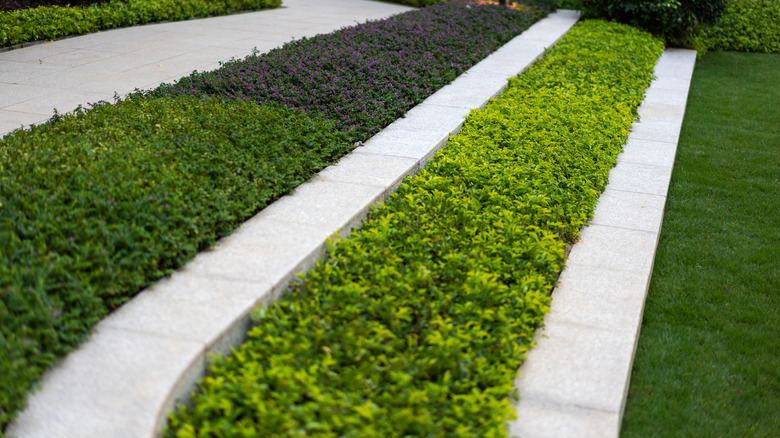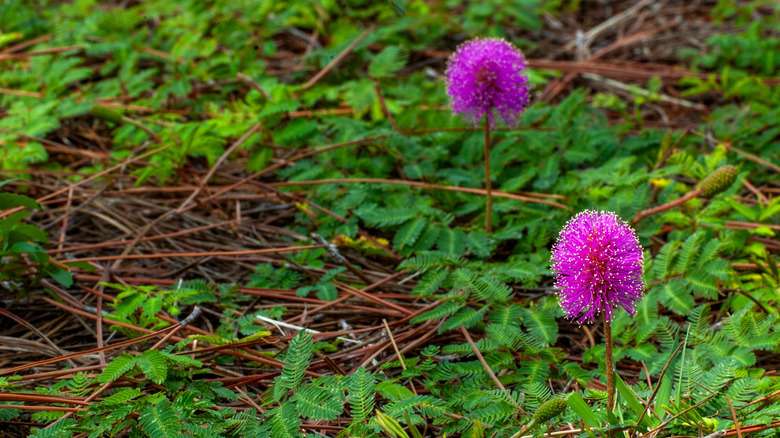The Fast-Growing Ground Cover That'll Attract Beautiful Butterflies To Your Yard
If you want to create a more wildlife- and eco-friendly garden, you're probably looking at native plants to add to your collection. You might even be looking for plants that will attract butterflies to your yard. To that end, there's an outstanding, fast-growing ground cover that not only looks gorgeous when in bloom but will also attract beautiful butterflies. It's commonly known as the powderpuff mimosa (Mimosa strigillosa), and you'll simply love the fluffy, pretty pink blooms that appear from spring through fall and look just like small powder puffs. Better still, this species is a larval host for the little sulphur butterfly.
Powderpuff mimosa is native to Florida, Arkansas, Texas, northeastern Mexico, and parts of South America. It can be grown in USDA hardiness zones 8 through 11, and it forms a lovely, dense mat as it spreads across the ground. It can even withstand mowing and light foot traffic, which is why it could be a good lawn substitute, if that's something you're looking for. This fast-growing ground cover is quite attractive even when not in bloom, as it has fern-like bright green leaves that fold up when touched. Although powderpuff mimosa can spread fairly quickly, it's not regarded as aggressive, which means you can safely interplant it with other species in your garden. Plus, it can easily be trimmed back when needed.
How to care for powderpuff mimosa
This delightful ground cover can be planted either in full sun or part shade. It prefers moist but well-drained soil and should be kept watered at first, but once it's well established, it's very drought tolerant. This is another good reason why savvy gardeners are using this plant in place of turf. In fact, there are plenty of eco-friendly grass alternatives for your lawn.
What you might find quite interesting is that this species is a legume, which means that it can fix nitrogen to the soil, thanks to the nodules on its deep roots. This also means that the plant's fertilizer needs are relatively low as long as the roots are able to nodulate. However, if you notice that the foliage is looking a little yellow, you can apply a slow-release fertilizer that's preferably low in phosphorus.
In northern regions, the foliage may die back over winter, and it may also become a little sparse in southern areas as the weather cools down. However, the plant puts down deep taproots when the stem nodes come into contact with the soil, so your ground cover should green up again once the weather warms up. Best of all, you only need around four or five potted plants to cover an area of 200 to 300 square feet, with complete coverage occurring in just six months if you plant in spring. However, you might also be interested in exploring some other evergreen ground covers for stunning color all year round.

